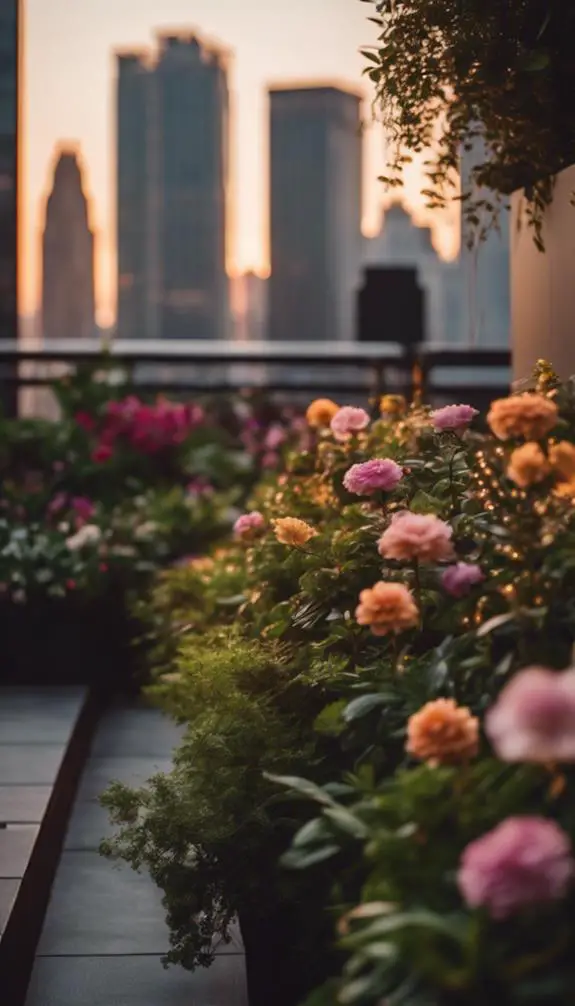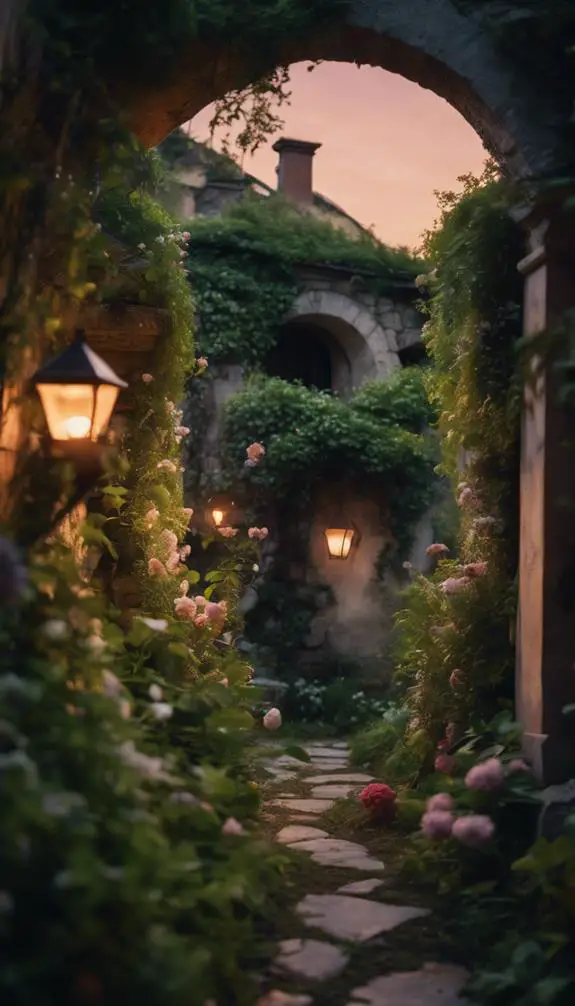As you envision your rooftop garden, you're likely imagining a serene escape from the hustle and bustle of city life. You're not alone – many urban dwellers are turning to rooftop gardens as a way to reconnect with nature and create a personalized oasis. But where do you start? With so many design elements to ponder, from plant selection to materials and lighting, it can be overwhelming. You'll want to balance functionality with aesthetics, ensuring your rooftop garden is both beautiful and functional. What's the key to achieving this perfect blend, and how can you make your rooftop garden a true urban retreat?
Summary
- Balance hard surfaces with lush greenery, opting for low-maintenance plants that thrive in urban conditions.
- Optimize vertical space using trellises, arbors, or wall-mounted planters to maximize available area.
- Select materials that exude urban chic, such as reclaimed wood or repurposed plastic, to create a tranquil escape.
- Incorporate whimsical elements, like fairy lights or meandering paths, to add texture and depth to the design.
- Choose eco-friendly membranes that provide insulation, waterproofing, and UV protection for a sustainable and functional rooftop garden.
Modern Rooftop Oasis Design

Among the sleek, urban landscapes of modern cities, a Modern Rooftop Oasis Design can be a tranquil escape from the hustle and bustle.
You'll achieve this by incorporating a rooftop aesthetic that exudes urban chic. Start by selecting materials that blend seamlessly with the cityscape, such as sleek metal railings, minimalist planters, and industrial-chic lighting fixtures.
Next, balance hard surfaces with lush greenery, opting for low-maintenance plants that thrive in urban conditions. To create a cohesive look, choose a limited color palette and repeat it throughout the space.
Small Space Garden Solutions
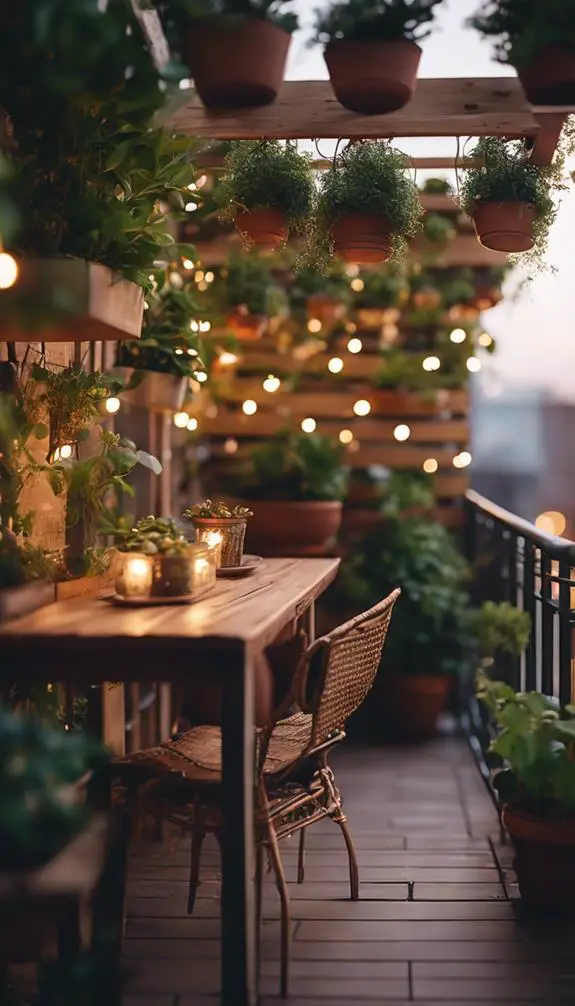
When designing a rooftop garden in a small space, you'll need to optimize vertical space by using trellises, arbors, or wall-mounted planters to make the most of your available area.
You'll also want to utilize corner areas by selecting plants that thrive in triangular spaces or incorporating corner-specific planters. By maximizing compact containers, such as window boxes or hanging baskets, you can create a lush oasis even in the smallest of rooftop gardens.
Optimizing Vertical Space
You'll often find that rooftop gardens, particularly those in urban areas, are limited by their horizontal space.
To maximize your rooftop garden's potential, focus on optimizing vertical space. Install vertical planters to grow vining plants, herbs, or succulents. These space savers allow you to make the most of your rooftop's vertical real estate.
Consider using trellises or arbors to support climbing plants, adding depth and visual interest to your garden. You can also incorporate wall-mounted planters or living walls to increase your garden's vertical footprint.
Utilizing Corner Areas
Corner areas in rooftop gardens often remain underutilized, leaving valuable space untapped.
By incorporating corner seating, you can create cozy nooks that invite relaxation and conversation. Consider angular planters that fit snugly into corners, maximizing space while adding visual interest.
These planters can be used to grow vines, succulents, or herbs, further enhancing the functionality of the area. To create a seamless look, choose planters that complement the overall aesthetic of your rooftop garden.
Maximizing Compact Containers
Most rooftop gardens feature compact containers, which can be optimized to maximize their planting potential.
To get the most out of these space savers, you'll want to select compact soils that are specifically designed for small-space gardening. These soils are formulated to retain moisture and nutrients, ensuring your plants receive exactly what they need.
When choosing your containers, look for ones with built-in water reservoirs or irrigation systems to minimize watering frequency. Consider using vertical planters or trellises to increase your planting surface area without taking up more floor space.
Urban Jungle Inspiration
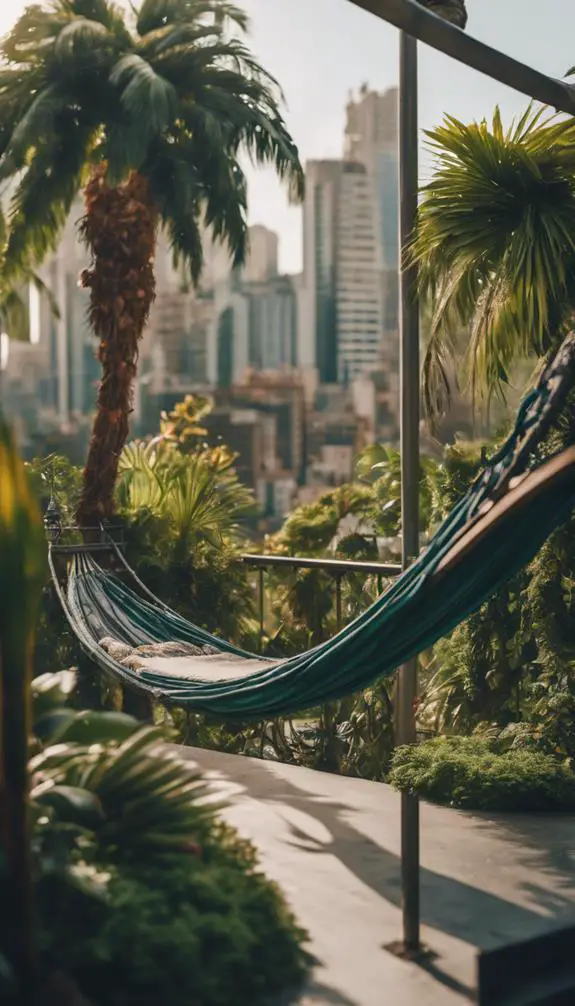
You'll want to choose wild plant species that thrive in urban conditions, such as succulents and air plants, to create a lush, untamed atmosphere in your rooftop garden.
To create an urban oasis, you'll need to weigh factors like shade, wind direction, and soil quality when selecting plants and designing your space.
Wild Plant Choices
Vibrancy permeates every aspect of an urban jungle-inspired rooftop garden, and the key to achieving this lies in the selection of wild plant choices.
You'll want to incorporate a mix of native wildflowers, which will attract local pollinators and add a dynamic pop of color to your space.
Consider combining wildflower mixes with meadow landscapes, featuring grasses and perennials that evoke a sense of untamed beauty.
When choosing plants, opt for species that thrive in local climate conditions and require minimal maintenance.
This approach won't only create a visually stunning space but also reduce your environmental footprint.
Urban Oasis Creation
As you set out to create an urban oasis, consider the rooftop garden as a microcosm of the urban jungle, where concrete and steel meet lush vegetation and natural textures.
To create a city escape, incorporate elements that bring serenity and calmness, such as water features, like small ponds or fountains, and seating areas with comfortable, weather-resistant furniture.
Add warmth with outdoor heaters or fire pits, and introduce natural materials like reclaimed wood, stone, or bamboo to create an urban haven.
Balance hard and soft landscaping by combining structural elements, like planters and screens, with lush greenery and flowering plants.
This harmonious blend will transform your rooftop into a tranquil retreat, perfect for escaping the urban bustle.
Whimsical Fairy Garden Ideas

Your rooftop garden's whimsical fairy garden section is a space where fantasy meets functionality.
To create an enchanting miniature world, incorporate fairy lights strategically to highlight specific features, such as tiny waterfalls or moss-covered stones. Consider using solar-powered lights to reduce energy consumption.
Design a meandering path using small stones or pebbles to guide visitors through the miniature worlds you've created. Incorporate plants with delicate foliage, like ferns or creeping thyme, to add texture and depth.
Use small-scale furniture, like tiny benches or arbors, to create a sense of whimsy. By balancing fantasy and functionality, you'll create a rooftop fairy garden that's both enchanting and functional.
Contemporary Rooftop Retreats
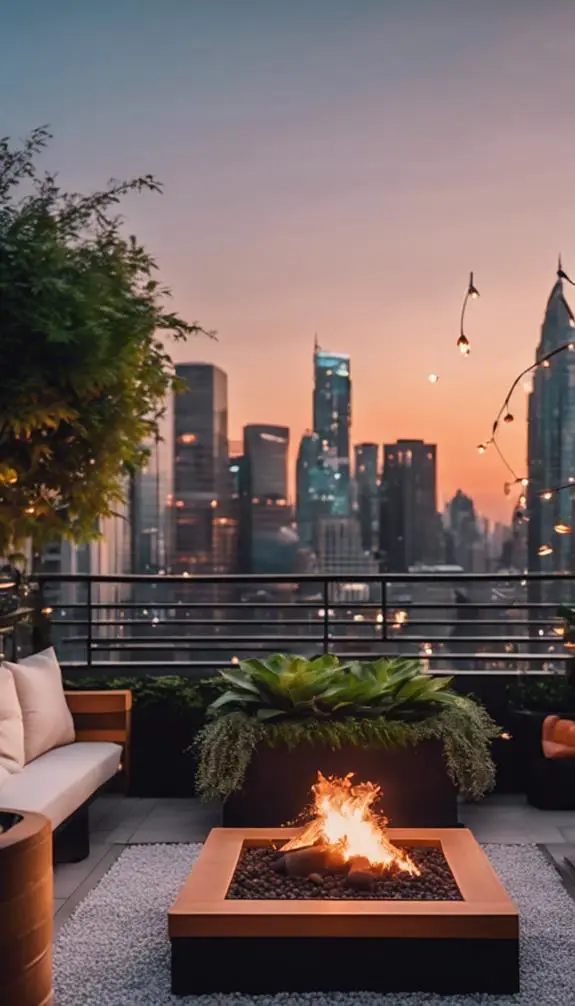
You're creating a contemporary rooftop retreat that's an urban oasis, and you'll need to weigh how to effectively utilize the space.
To achieve this, you'll want to think about modern space division techniques, such as using planters, screens, or furniture to define different areas within the rooftop garden.
Urban Oasis Creation
Transforming a rooftop into an urban oasis requires careful consideration of multiple elements to create a serene retreat amidst the hustle and bustle of city life.
You'll need to balance urban planning principles with innovative green infrastructure solutions. Consider the rooftop's microclimate, wind patterns, and sunlight exposure to select suitable plant species and hardscape materials.
Incorporate rainwater harvesting systems and greywater reuse to minimize your oasis's environmental footprint. Strategically place seating areas, walkways, and vertical gardens to create a sense of calm and connection to nature.
Modern Space Division
As urban oases take shape, the focus shifts to crafting modern spaces that seamlessly integrate functionality with aesthetics.
You're tasked with creating a rooftop retreat that's both visually stunning and highly functional. To overcome space constraints, consider incorporating decorative partitions to define different zones within your rooftop garden.
These partitions can be made from a variety of materials, such as glass, metal, or living walls, and can be designed to provide privacy, filter sunlight, or create a sense of separation.
Green Roofing Materials Guide
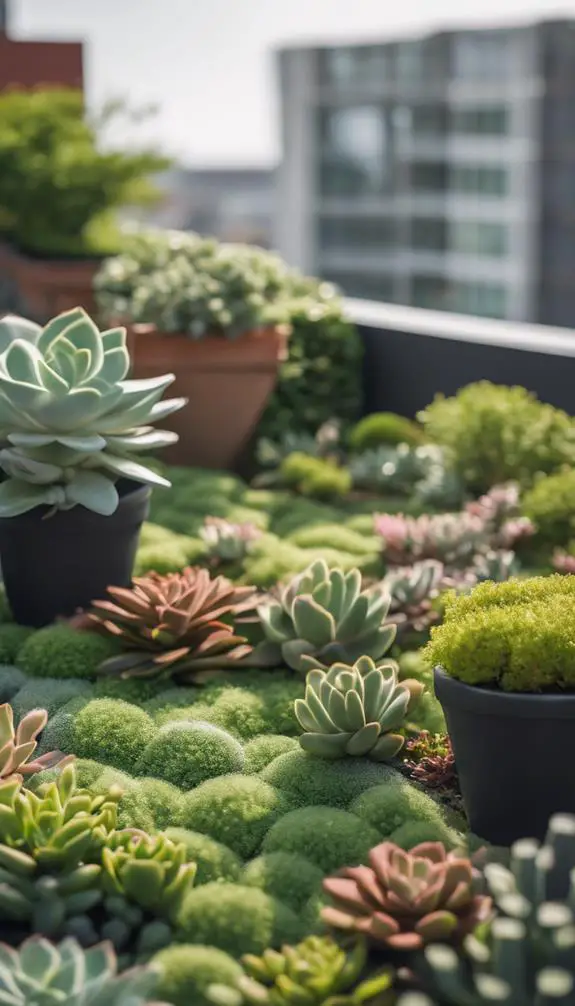
Selecting the right green roofing materials is a pivotal step in designing a rooftop garden, as they directly impact the roof's functionality, maintenance, and overall aesthetic appeal.
When choosing materials, consider your rooftop garden's specific needs, such as climate, drainage, and weight capacity. Look for eco-friendly membranes that provide insulation, waterproofing, and UV protection.
These membranes are an essential component of green infrastructure, allowing plants to thrive while minimizing environmental impact. Some popular options include EPDM, PVC, and TPO.
You may also consider using recycled materials, such as reclaimed wood or repurposed plastic, to create a unique and sustainable design. By selecting the right materials, you'll create a rooftop garden that's both beautiful and functional.
Vertical Gardening Techniques

With your rooftop garden's foundation in place, you're ready to maximize its potential by incorporating vertical gardening techniques.
This approach optimizes space, adds visual interest, and increases plant density. You can utilize wall planters to create a lush, green facade, or install vertical screens to provide structural support for climbing plants.
Consider a trellis system or a living wall planter to add depth and texture. When selecting plants, choose varieties that thrive in vertical conditions, such as ivy, succulents, or flowering vines.
Guarantee proper irrigation and drainage systems are in place to support your vertical garden's unique needs. By incorporating these techniques, you'll create a thriving, space-efficient oasis that showcases your rooftop garden's full potential.
Rooftop Herb Garden Designs
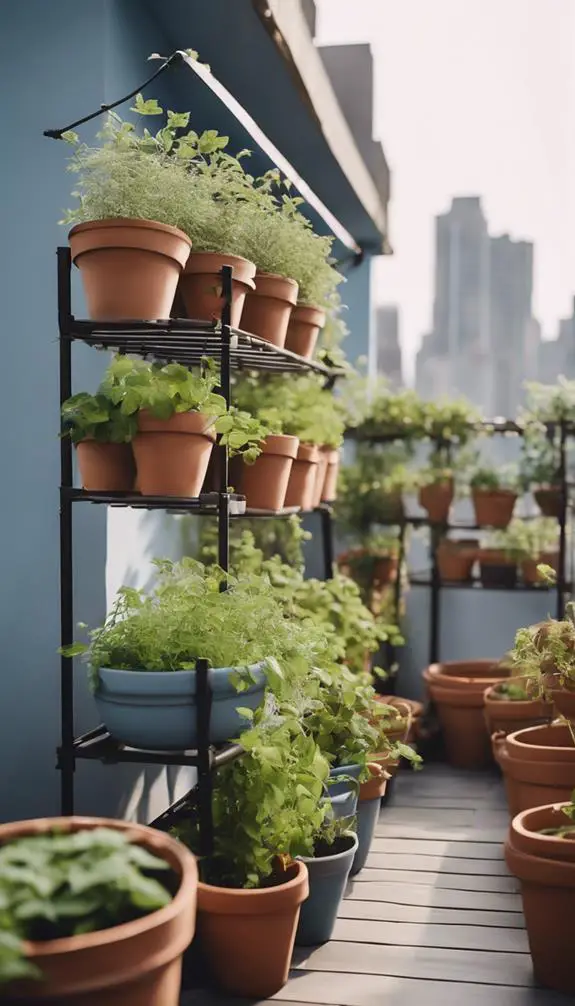
Harmony in your rooftop oasis is achieved when functionality meets aesthetics, and a rooftop herb garden design embodies this perfect blend.
When designing your rooftop herb garden, weigh the layout to guarantee maximum growth and accessibility.
Herb garden layouts can be categorized into formal, informal, or a mix of both. Formal layouts feature symmetrical patterns, while informal designs incorporate a more natural, curved shape.
You'll also want to ponder herb plant pairing, as certain herbs complement each other regarding growth habits and pest resistance.
For example, pair basil with tomatoes to improve their flavor and repel pests.
DIY Rooftop Planters Ideas
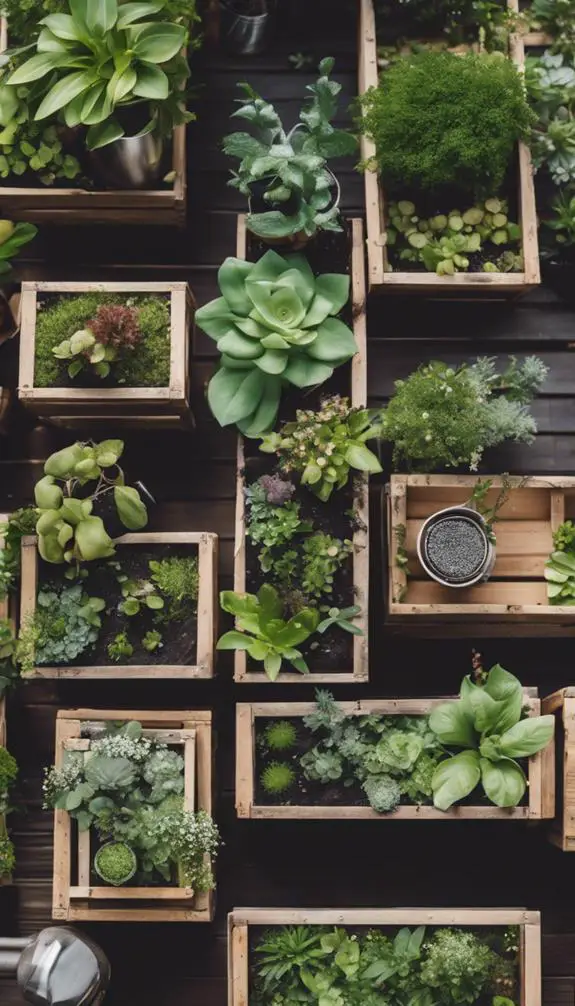
Since rooftop garden space is often limited, incorporating DIY rooftop planters into your design can maximize growing capacity while adding visual appeal.
You can create planters from recycled materials like old pallets, wooden crates, or plastic containers. Consider using self-watering planters or those with built-in irrigation systems to reduce maintenance.
For a modern rooftop decor, opt for sleek, minimalist planters in materials like stainless steel or fiberglass. Alternatively, choose planters with a natural, earthy look to bring warmth to your space.
When selecting planter types, think about the plants you want to grow and their specific needs. For example, use shallow planters for succulents and deeper ones for vegetables or flowers.
Cozy Seating Area Concepts
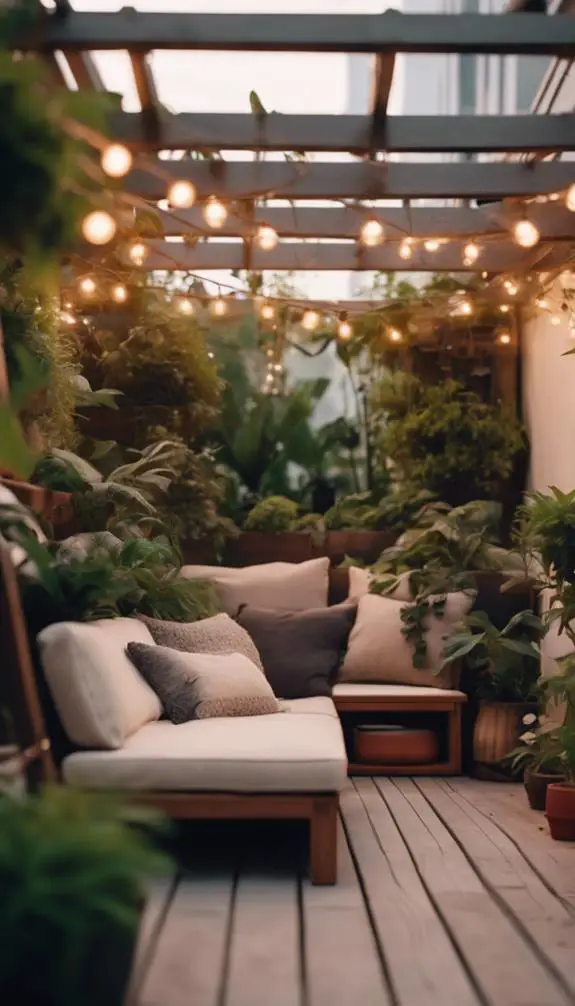
Your rooftop garden's cozy seating area is a sanctuary that allows you to relax and unwind amidst lush greenery.
To create this haven, consider incorporating cozy corners with plush outdoor furniture, such as a sectional sofa or a hammock.
These areas can be further defined by adding floor lamps, side tables, or a fire pit.
Secluded nooks can also be created by using trellises, arbors, or pergolas to provide shade and privacy.
Add some soft textiles like throw pillows, blankets, and rugs to enhance the comfort level.
Lighting for Rooftop Gardens
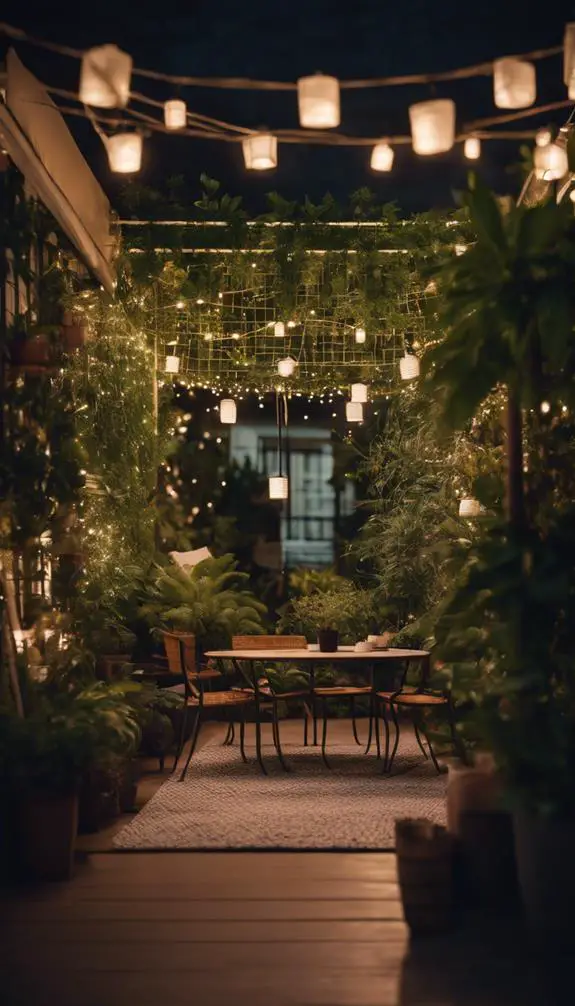
Three key elements – functionality, ambiance, and safety – converge in rooftop garden lighting, making it a crucial aspect of your outdoor space's design.
You'll want to balance these elements to create a cohesive and inviting atmosphere.
Ambient Lighting provides soft, overall illumination, setting the mood and highlighting architectural features.
Task Lighting, on the other hand, focuses on specific areas, such as seating or plant beds, to facilitate activities and accentuate design elements.
Consider using energy-efficient LED lights, which come in a range of colors and temperatures to suit your design style.
Nature-Inspired Water Features
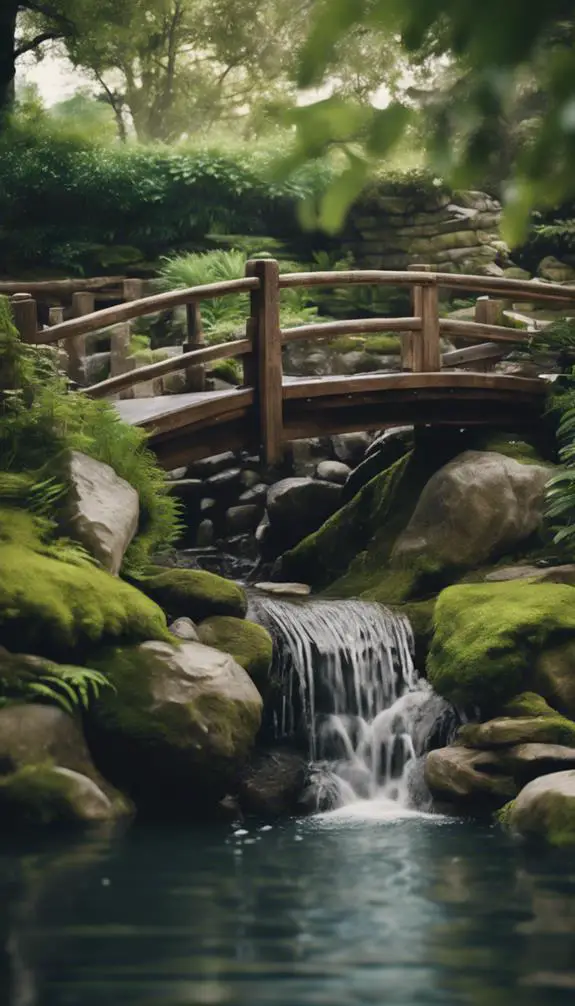
Serenity permeates your rooftop garden as the gentle sounds and visuals of nature-inspired water features transport you to a tranquil oasis.
To create this ambiance, consider incorporating water walls that cascade down a vertical surface, adding visual interest and soothing sounds.
Alternatively, fountain features can be designed to mimic the gentle flow of a natural stream or the gentle lapping of waves against the shore.
These features can be customized to fit your rooftop garden's unique layout and style.
Edible Rooftop Garden Plans
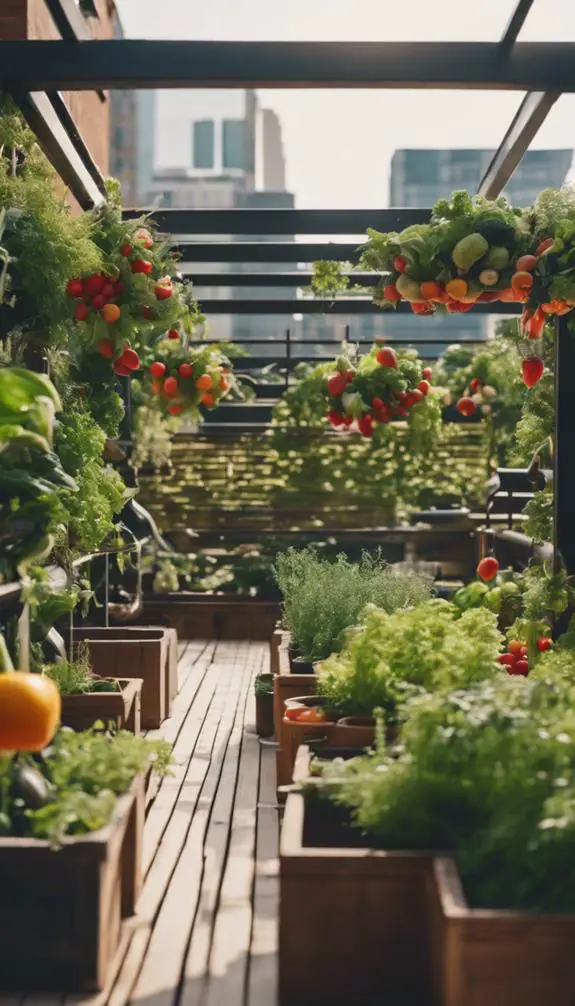
Design an edible rooftop garden that provides a bounty of fresh produce and becomes a thriving oasis in the midst of urban surroundings.
To maximize yields, incorporate edible boundaries by using trellises, arbors, or walls to train vining plants like peas, beans, or tomatoes. This approach increases usable space while adding visual interest.
Implement crop rotation to maintain soil health and prevent pest buildup. Divide your rooftop into sections, each dedicated to a specific crop family, and rotate them seasonally.
This strategy guarantees a diverse harvest and minimizes the risk of disease. By applying these principles, you'll create a productive and resilient edible rooftop garden that flourishes in even the most urban environments.
FAQs
How Do I Ensure My Rooftop Garden Can Withstand Extreme Weather Conditions?
To guarantee your structure withstands extreme weather, you'll need to prioritize weather resistance and insulation methods. You'll want to select materials with high wind loads, waterproof membranes, and thermal insulation to protect your garden from harsh conditions.
Can I Install a Rooftop Garden on a Flat Roof With No Drainage?
You can install a rooftop garden on a flat roof with no drainage by implementing a waterproofing system featuring flat membranes and multiple waterproof layers, ensuring a reliable barrier against water ingress and damage.
Are There Any Specific Building Codes for Rooftop Gardens I Should Know?
You'll need to research and comply with local building codes, securing rooftop permits and certifying your design adheres to zoning laws, which vary by region, to avoid costly rework and guarantee a safe, innovative rooftop oasis.
How Do I Prevent Pests and Rodents From Infesting My Rooftop Garden?
You'll want to implement pest control methods, such as physical barriers, repellents, and traps, to prevent infestations. Install wildlife deterrents, like bird-repellent balloons or ultrasonic devices, to discourage unwanted visitors from inhabiting your rooftop oasis.
Can I Use My Rooftop Garden as a Habitat for Local Wildlife?
You can create a habitat for local wildlife by designing your rooftop garden as a wildlife corridor, incorporating native species that provide food, shelter, and breeding grounds, and carefully selecting plants that support biodiversity and ecosystem services.
Conclusion
As you finalize your rooftop garden design, remember to balance aesthetics with functionality. Certify your chosen materials and plants can withstand urban conditions and microclimates. Consider incorporating sustainable elements, like recycled materials and eco-friendly membranes, to create a thriving oasis. By blending modern design with whimsical touches, you'll craft a serene retreat that's both functional and enchanting.



